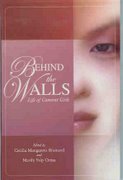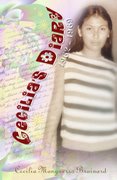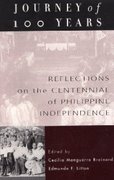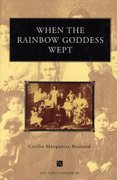
Book review of "Finding God" BY ALLEN GABORRO (Philippine News, November 20, 2009)
TITLE: Finding God: True Stories of Spiritual Encounters
Edited by Cecilia Manguerra Brainard and Marily Ysip Orosa
PUBLISHER: Anvil Publishing (Manila)
158 pages
nonfiction
Distributed in the US by palhbooks.com, email palhbooks@gmail.com
http://www.palhbooks.com/cbrainardfg.html
-------------------------------------------------------------------------------------------------------
“Finding God: True Stories of Spiritual Encounters” is a righteous anthology of works that focus on the mark that God has made on the book‘s writers. A total of 18 pieces have been contributed to “Finding God” which was put together and edited by author Cecilia Manguerra Brainard and book publisher Marily Ysip Orosa.
Their publication is timely, depending of course on how you would identify yourself as either a religious person, an agnostic, or as a non-believer. The book attempts to fill the void between Christian ideals and the confounding reality of our modern, secular existence by trying to inspire its reading audience into realizing a closer, more personal relationship with God. And in a time when Filipinos and Filipino Americans are ever-mindful of the pressing demands of the temporal world, “Finding God” seeks to rebrand humanity with God’s fullness and grace.
At the risk of sounding evangelistic, Brainard and Orosa have touted their anthology as nothing less than “God’s book” and that they were “His tools” in the creation of that book. A little melodramatic perhaps, but that is not to say that the true believing reader will not feel God’s presence throughout the pages of “Finding God.” In fact, it is not an exaggeration to say that the editors have indisputably attributed the conception and the production of the book to God himself.
“Finding God” finds unity in diversity as it respects the authors’ individualism and the awareness that they share something in common that is very sublime and transcendent. That something is their Christian faith and it is the glue that holds all of the book’s contributors together. Brainard and Orosa apply that faith to create a consensus of spirituality out of a collection of people who, judging from the multiplicity of their backgrounds, may not agree at all on other issues.
Foremost among the stories in “Finding God” is the anthology’s very first one, titled “Losing God” by Mila D. Aguilar. To understand Aguilar’s essay, one need look no further than her life both as a young girl and then later, as a political revolutionary. As a young girl, Aguilar determined that God did not exist, that “there was no God, that he was but a figment of man’s imagination.” Her first-hand look at poverty in the Philippines caused Aguilar to conflate the deprivation she saw with the nonexistence of God. Consequently, her mindset acknowledged no other philosophy other than atheism and communism “as the ultimate solution to social inequality.”
The images of Aguilar’s arrest and incarceration in 1984 by Ferdinand Marcos’s security forces are filled with tension, drama, and danger. Surviving her imprisonment becomes tenuous at one point, as one of her interrogators implies that her days on earth are numbered. Ironically it is at this point that Aguilar, the atheistic revolutionary, refers her fate to a divinity in her moment of impending doom: “If that is what God wills…I was as ready to die or be butchered.” Aguilar eventually finds her way to God after her release from prison following the downfall of the Marcos regime.
A spiritual being can easily find divine inspiration in the collection’s narratives for “Finding God” reverently depicts the vital spirituality that colors its assortment of stories. However, a principally secular humanist and rationalist—there are far more of them among Filipinos and Filipino Americans than one might think—would take issue with this. The book is to the Filipino Christian faithful what a prayer meeting is to a gathering of devoted attendees. “Finding God” conveys a message that is totally commensurate with the Christian worldview and ethos, but one that is also at variance with any model of critical discussion. In this sense, Brainard’s and Orosa’s publication is a microcosm of Christianity’s immutable version of compassionate conservatism and pathos.
With seemingly intricate candor, “Finding God” tries to do justice to the completeness of God by posing an interchange between the spiritual lives and faith of its contributors and those who choose to closely consider the moral and historical contradictions that surround the Christian religion. By doing so, the book’s editors deliver a spiritually sobering yet uplifting message of faith that some readers will embrace and others will take with a grain of salt.
ALLEN GABORRO














































